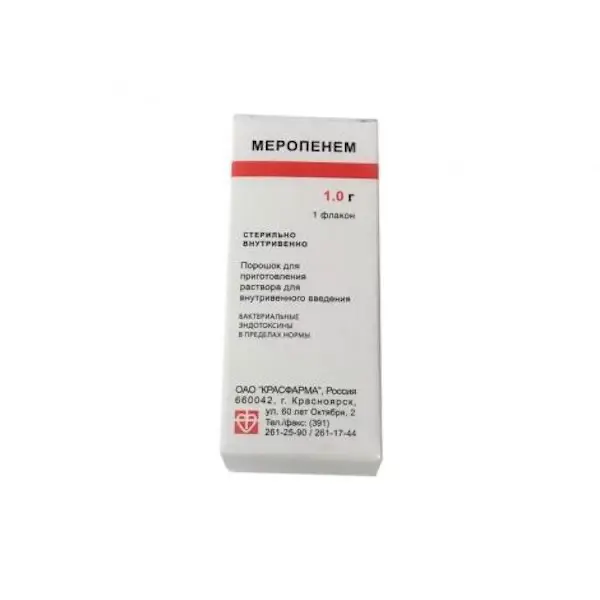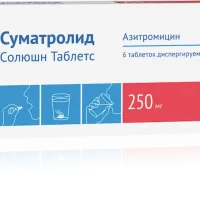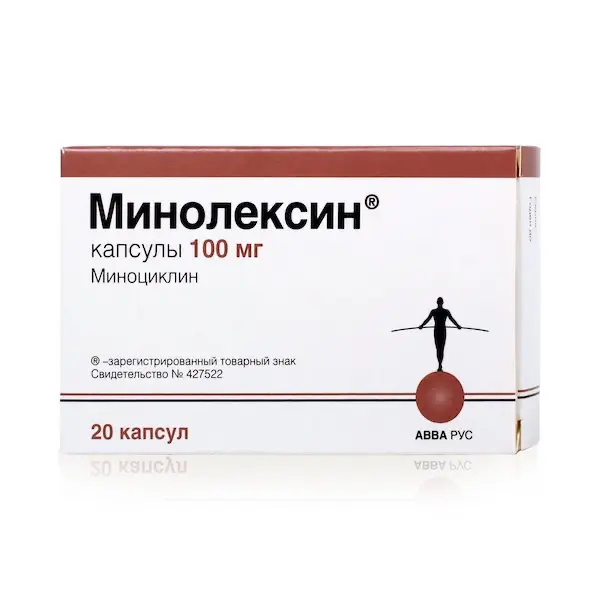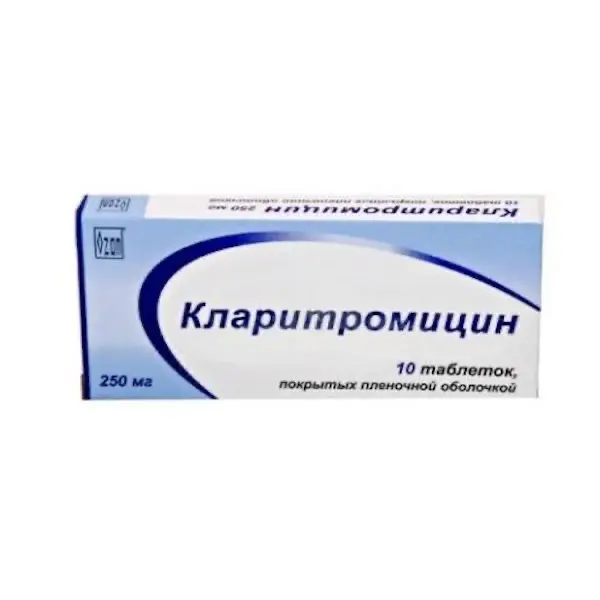Description
Meropenem Pharmacodynamics
Meropenem is an antibiotic of the carbapenem class, intended for parenteral use, relatively resistant to human dehydropeptidase-1 (DHP-1), does not require additional administration of DHP-1 inhibitor.
Meropenem has a bactericidal effect due to its effect on the synthesis of the bacterial cell wall. High bactericidal activity of meropenem against a wide range of aerobic and anaerobic bacteria is explained by high ability of meropenem to penetrate through the bacterial cell wall, high level of stability to most ?-lactamases and significant affinity to various penicillin-binding proteins (PBPs). Minimum bactericidal concentrations (MBCs) are generally the same as minimum inhibitory concentrations (MICs). For 76% of the bacterial species tested, the MIC/ MIC ratio was 2 or less.
In vitro tests show that meropenem acts synergistically with various antibiotics. In vitro and in vivo tests show that meropenem has a postantibiotic effect.
Microorganisms may possess one or more of the following mechanisms of resistance to meropenem: disruption of cell wall permeability of Gram-negative bacteria due to impaired porin synthesis; decrease in affinity to target PSBs; activation of efflux mechanisms; production of beta-lactamases, under the action of which carbapenem hydrolysis occurs.
The only recommended criteria for sensitivity to meropenem are based on the pharmacokinetics of the drug and on the correlation of clinical and microbiological data – zone diameter and MIC determined for the corresponding pathogens.
Indications
Meropenem is indicated for the treatment in children (over 3 months) and adults of the following infectious and inflammatory diseases caused by one or more meropenem-sensitive pathogens:
-Pneumonia, including nosocomial pneumonia;
-infections of the urinary system;
-infections of the abdominal cavity;
-infections of the pelvic organs, such as endometritis;
-infections of the skin and its structures;
-meningitis;
-septicemia.
Empirical therapy of adult patients with suspected infection with symptoms of febrile neutropenia in monotherapy or in combination with antiviral or antifungal drugs.
The effectiveness of meropenem has been proven both in monotherapy and in combination with other antimicrobial agents in the treatment of polymicrobial infections.
Intravenous use of meropenem was effective for treatment of cystic fibrosis and chronic lower respiratory tract infections both in monotherapy mode and in combination with other antimicrobial agents. Eradication of microorganisms has not always been confirmed.
Contraindications
Hypersensitivity to meropenem, to the excipients or other drugs of the carbapenem group in the history.
Severe hypersensitivity (anaphylactic reactions, severe skin reactions) to any antibacterial agent having a beta-lactam structure (i.e. penicillins or cephalosporins).
Childhood under 3 months of age.
Caution
Concomitant use with potentially nephrotoxic drugs.
Patients with gastrointestinal complaints (diarrhea), especially those with colitis.
Administration during pregnancy and lactation
Pregnancy
The safety of meropenem in women during pregnancy has not been studied. Animal studies have not shown any adverse effects of meropenem on the developing fetus.
The use of Meropenem during pregnancy is possible only in cases when the estimated benefit to the mother exceeds the potential risk to the fetus. In each case, the drug should be used under strict medical supervision.
Breastfeeding period
Meropenem is detected in the breast milk of animals in very low concentrations. The drug Meropenem should not be used during breastfeeding unless the potential benefit for the mother from using the drug exceeds the possible risk for the child. If it is necessary to use the drug during lactation, discontinuation of breastfeeding should be considered.
Dosage and administration
- Adults
- The dose and duration of therapy should be adjusted according to the type and severity of the infection and the patient’s condition.
- The following daily doses are recommended:
500 mg intravenously every 8 hours in the treatment of pneumonia, urinary tract infections, gynecologic infections such as endometritis, skin infections and skin structures;
1000 mg intravenously every 8 hours in the treatment of nosocomial pneumonia, peritonitis, suspected bacterial infection in patients with symptoms of neutropenia, and septicemia. - When treating meningitis, the recommended dose is 2000 mg every
8 hours. - When treating some infections, particularly those caused by less sensitive pathogens (such as Enterobacteriaceae, Pseudomonas aeruginosa, Acinetobacter spp.) or very severe infections, the recommended dose is up to 2000 mg every 8 hours.
The safety of the 2000 mg dose as a bolus injection has not been adequately studied. - Dose in adult patients with impaired renal function
In patients with a creatinine clearance of less than 51 mL/min, the dose should be reduced as follows
Creatinine clearance (mL/min) Dose
(based on dose unit.
500 mg, 1000 mg, 2000 mg) Frequency of administration
26-50 one unit dose every 12 hours
10-25 0.5 dose units every 12 hours
< 10 0.5 dose units every 24 hours - Meropenem is excreted by hemodialysis and hemofiltration. If prolonged treatment with meropenem is required, it is recommended that the drug (depending on the type and severity of the infection) be administered at the end of the hemodialysis procedure to restore effective plasma concentrations.
- There are currently no data on the experience of meropenem administration to patients on peritoneal dialysis.
- Dosing in adult patients with hepatic impairment
No dose adjustment is necessary in patients with hepatic impairment. - Elderly patients
In elderly patients with normal renal function or creatinine clearance greater than 50 mL/min do not require dosage adjustment. - Children
- In children aged 3 months to 12 years, the recommended dose for intravenous administration is 10-20 mg/kg every 8 hours depending on the type and severity of the infection, the sensitivity of the pathogen and the patient’s condition.
- In children with body weight over 50 kg, doses for adults should be used.
- In meningitis, the recommended dose is 40 mg/kg every 8 hours.
- In treatment of some infections, particularly those caused by less sensitive pathogens (such as Enterobacteriaceae, Pseudomonas aeruginosa, Acinetobacter spp.) or in very severe infections, the recommended dose is up to 40 mg/kg every 8 hours.
- The safety of the dose of 40 mg/kg as a bolus injection has not been sufficiently studied.
There is no experience of using the drug in children with hepatic and renal dysfunction. - Method of administration
- Meropenem can be administered as an intravenous bolus injection for at least 5 min or as an intravenous infusion for 15-30 min; appropriate infusion fluids should be used for dilution.
- The possibility of using meropenem in extended infusion mode (up to
3 hours) is based on pharmacokinetic and pharmacodynamic parameters. To date, clinical and safety data supporting this regimen are limited. - To prepare a solution for intravenous bolus injections, meropenem should be dissolved with water for injection (5 ml per
250 mg of meropenem), with a solution concentration of 50 mg/ml. - To prepare a solution for intravenous infusion, meropenem should be dissolved with 0.9% sodium chloride solution for infusion or 5% dextrose (glucose) solution for infusion, and the solution concentration should be 1 to 20 mg/ml.





